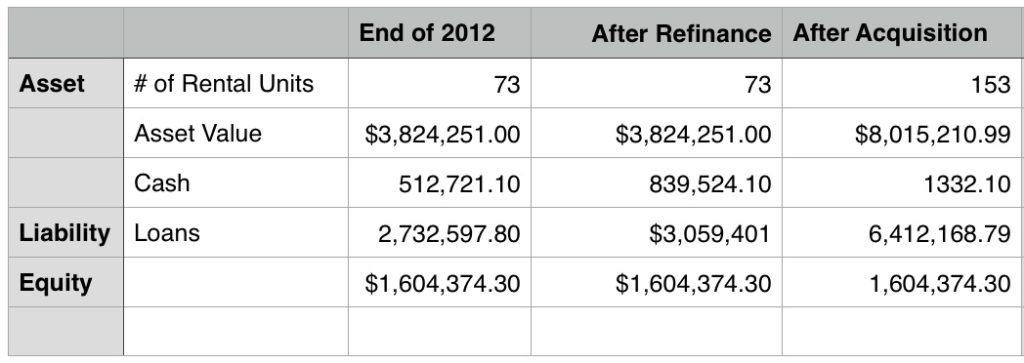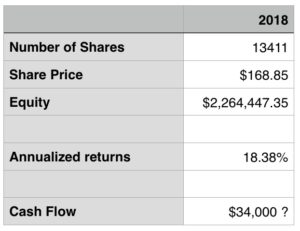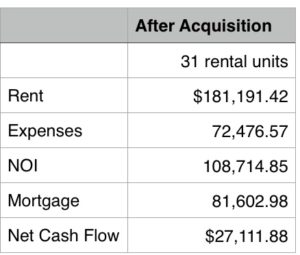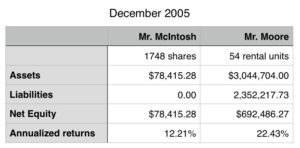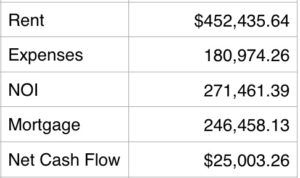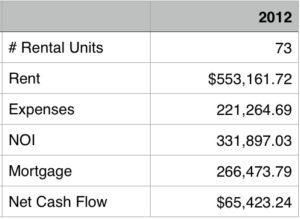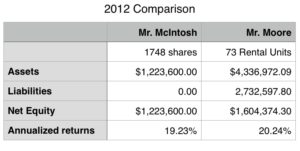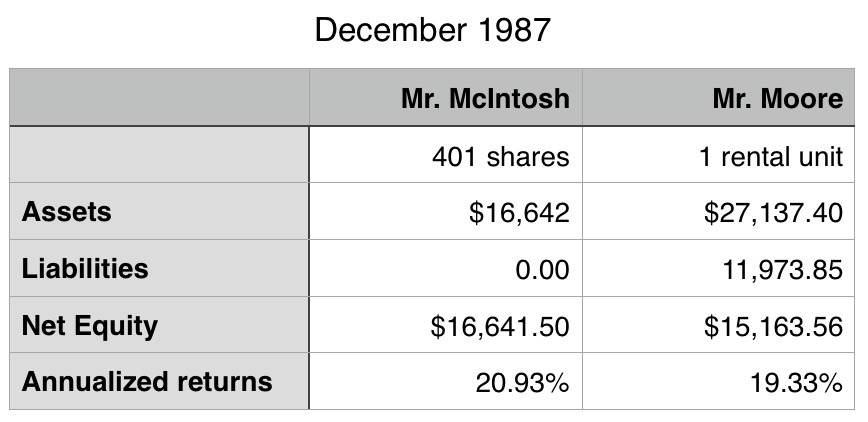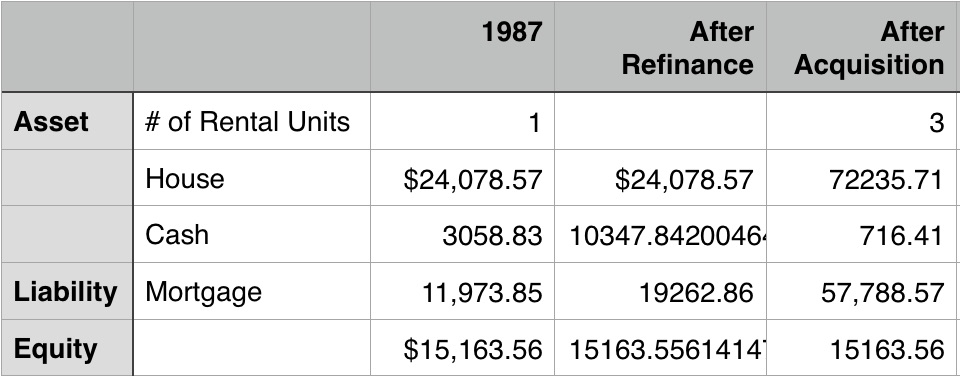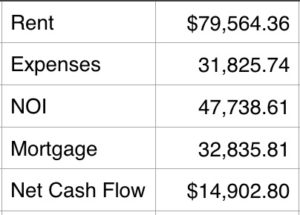Welcome back to our third installment of A Tale of Two Investors. Make sure that you read Part 1 and Part 2 if you haven’t already.
2012
In Part 2, our investors survived 2 major financial crisis’ and here is a comparison of their equity position.

In 2012, the housing prices nationwide stopped going down and investors began to slowly warm up to investing again. Interest rates were low, the banks and the auto industry were saved. At the end of 2012, Mr Moore had accumulated a significant amount of cash as shown by the table below so he decides to refinance his portfolio and use his cash to acquire 80 more rental units.
Mr McIntosh also has some amazing news. The Apple stock soars to $700. Here is a comparison of our 2 investors.
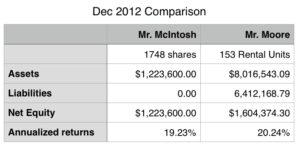
Our two investors appear to have very similar returns but let’s not forget that Mr. Moore is receiving positive cashflow as shown below.
2014
In 2012, Apple started paying dividends again and Mr McIntosh reinvested his dividends at the end of each year by purchasing additional shares. When Apple announced a 7 for 1 stock split in 2014, Mr McIntosh had accumulated 1802 shares. The price price per share after the split is $93.70. Mr McIntosh is extremely pleased with the result of his investments so far.
During 2013, Mr Moore acquires 30 more rental units and at the end of 2014 he is able to acquire an additional 47 rental units.
2018
As Apple continues to pay dividends every quarter, at the end of each year Mr McIntosh uses the proceeds to acquire more shares and in 2018 Mr McIntosh managed to accumulate 13,411 shares of Apple. Currently, each quarter Apple pays $0.63/shares so Mr McIntosh receives annual cashflow of $34,000. We put a question mark beside that cash flow number because this cashflow is uncertain since Apple decides how much it will pay in dividends. In fact, Apple can decide to stop paying dividends altogether like it did in 1995.
To summarize Mr McIntosh’s equity position increased from $4,400 to $2,264,000 over 37 years which represents an annualized returns near 18%. This is a much more significant return than the S&P which is 11.3% with dividend reinvestment (See calculator here).
On the other hand Mr Moore has achieved financial freedom and beyond. He continued to reinvest his cashflow every year and at the end of 2018 Mr Moore is the CEO of a Real Estate empire holding $27M in assets. Mr Moore not only generated $10M in equity with a 22% annualized returns he also has created a company that generates almost half a million a year in net cash flow.
Next 10 years
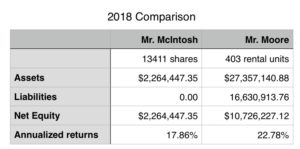
Above is the hypothetical equity position of our two investors today. Now really put yourself in their shoes. If you are Mr. McIntosh, do you continue to hold? What will happen to Apple in the next 10 years? Will they continue their dividend program? Will the revenue continue to rise at the same rate? Where do you get your information? How do you affect the direction of the company? I think we all agree that the future is uncertain for Mr. McIntosh and most of us would sell at least some of the portfolio. Remember that this is not the strategy he used to get these unusual results.
Now put yourself in Mr. Moore’s sandals. What do you do next? I think many of us would be thinking of how to allocate the cash flow. More acquisitions, more loan payout, more vacations.
Conclusion
It should be clear by now that even an investor who choses a stock that they knew would be a winner is no match for a disciplined real estate investor. No investors know in advance that a stock will be worth 534 times more 37 years later. As we’ve demonstrated not many investors would stick to the same investment for 37 years considering that the company changed CEO, started to lose money and market share, on top of the regular ups and downs of the market and the economy. We’ve seen that a real estate investor:
– has choices over the direction of his investments because he is the CEO of his enterprise
– can leverage his cash to accelerate the equity growth and net cash flow with consistent reinvestment strategy
– can easily survive the worst financial crisis and could even take advantage of such crisis to acquire strategically
– can obtain financial freedom with positive cashflow
– can build an enterprise with significant asset that can be passed on to his descendents
If you want to get started on your real estate portfolio just like Mr. Moore then check out our current inventory and schedule an advisor call with us.
Sources:
Housing Price Index
History of Apple
Mortgage rate history
Inflation Calculator
Consumer Price Index

